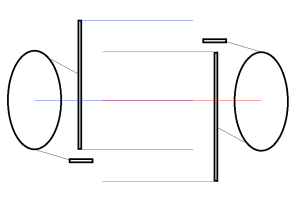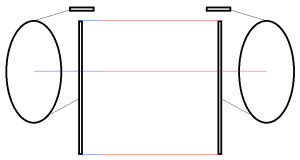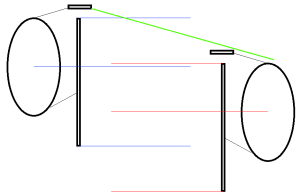If you’re uncertain about a term used in this post, please check the Terminology page.
Revised 09/18/2013
As a lefty, there are some concepts that apply to the majority of your combat that do not apply to the majority of righty combat. One of these concepts is body alignment. Body alignment is the term for where your center line is relative to your opponent’s center line. Your center line is an imaginary line projecting directly ahead of you from your center of mass. How this line matches up with your opponent is something which can be manipulated not just in dynamic combat but in static guard positions.
There are a couple important caveats that need to be made. I am assuming both fighters are fighting shield leg forward. If they are asymmetrically, with one sword leg forward and one shield leg forward, the dynamics change drastically. The changes in alignment discussed are also specifically lateral; changes in rotational alignment, such as by switching between sword and shield leg forward, are an entirely different issue.

When righties line up, they tend to off-set their center lines slightly or match them up. This gives them better defense against the other guy because his sword is within their shield borders, but since the other guy is doing the exact same thing he gets the exact same advantages.

If the righty decides to offset his center line, he gains the angle on his opponent, giving him better access to throw shots around the outside of his opponent’s shield. Unfortunately, his gives the exact same advantage to his opponent.
For the righty, manipulating how his center line interacts with his opponent’s never gains an him an advantage. It is still worth doing and being aware of, since it changes the dynamics of combat, but these changes are always a zero-sum game.

For the lefty, however, manipulating body alignment is a useful tactic for gaining an advantageous position in combat. In the default case, where both the lefty and his righty opponent have matched center lines, there is no advantage to either player. Both players have the same angles and the urge to foolishly high-cross is theoretically equal in both fighters.

Altering body alignment for the lefty provides a substantial combat advantage. By offsetting his center line, the lefty gains a better angle to throw to the righty’s sword side and simultaneously denies the righty a good angle to attach the lefty’s sword side. The righty is given increased exposure to the shield side, but this side is already well defended by the shield. The righty might even be more tempted to throw a high-cross to the shield shoulder, which is a low-percentage option.
Conversely, the lefty can shift his center line in the other direction. This creates an extremely attractive opening for his righty opponent by giving his opponent a good angle on his sword side while simultaneously making his shield side considerably less available. This can be used as a strong bait to encourage the righty to throw a specific, known shot to a known location, giving control of the fight to the lefty.
The alteration in body alignment can be subtle; even a slight shift gives the advantage to the lefty. Subtle alterations have the benefits of being less noticeable, and it can frequently happen that the righty is not even aware of the now altered body alignment and will attempt to throw the same shots, now with notably less success.
The core concept is that, for a lefty, lateral motion against a similarly positioned opponent creates unequal combat advantages and disadvantages, while for same-handed people it does not.